First appearing in written records in the third century B.C.E. and documented by Julius Caesar himself, Druids were esteemed ancient Celts who served as teachers, judges, and priests found in Britain and Gaul.
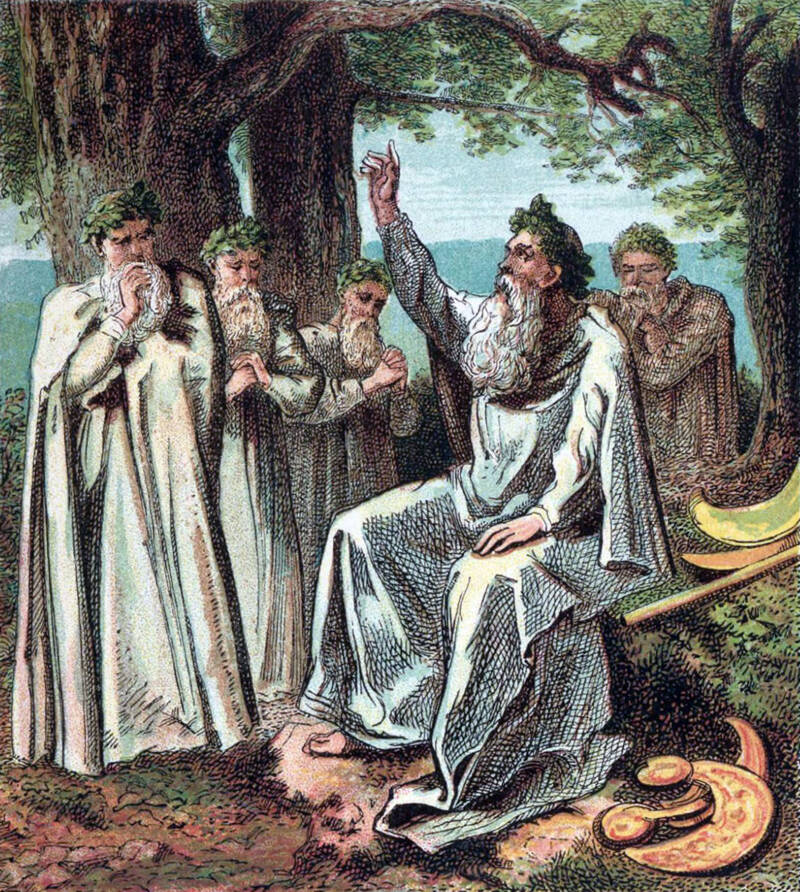
GL Archive/Alamy Stock PhotoThough once powerful Celtic leaders, Druids largely disappeared when the Romans conquered Britain and Gaul.
Druids, Roman historian Cornelius Tacitus declared around 116 C.E., were a violent people who covered their altars with the blood of their captives and consulted their gods using human entrails. But Tacitus’ second-hand account offers only a small peek at the Druids — and a heavily biased one at that. So, who were these ancient religious leaders?
The truth is that the Druids are difficult to understand, as they kept no records of their own. Instead, their story was largely documented by writers like Tacitus and Julius Caesar, Romans who had their own reasons for emphasizing stories of Druids’ violence and human sacrifice.
Still, accounts like these paint a rough picture of what Druids were like.
These religious leaders operated across Gaul and the British Isles, where they served many roles. Druids were teachers, philosophers, judges, and, most importantly, arbitrators between humans and gods. They had a complex society, methods of worship, and a system of punishment.
And though Druids eventually faded away under Roman influence and from the rise of Christianity, they never entirely vanished. Indeed, there has even been a reincarnation of Druidism in the 20th and 21st centuries.
Who Were The Druids?
The earliest documented reference to the Druids came 2,400 years ago. Julius Caesar, who wrote The Gallic Wars after conquering Gaul and invading Britain at the end of the first century B.C.E., explained that the Druids first emerged in the British Isles before spreading to Gaul (an ancient territory which included parts of present-day France, Belgium, Luxembourg, Switzerland, the Netherlands, Germany, and Northern Italy).
The word “Druid” may come from the Irish-Gaelic word for oak tree, doire, as oak trees were considered sacred and a symbol of knowledge. And the Druids, who Caesar claimed memorized their beliefs instead of writing them down, were charged with teaching and guiding the society around them.
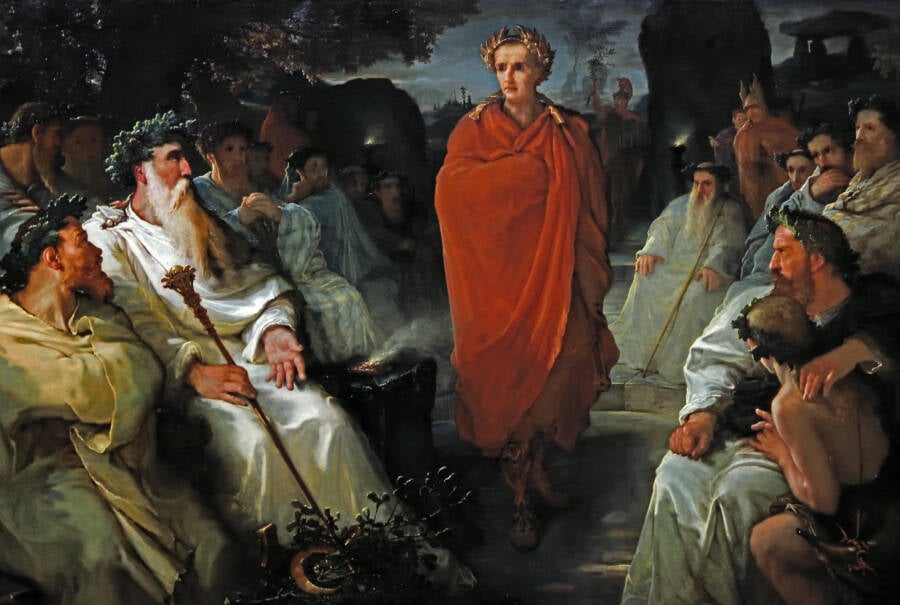
Peter Horree/Alamy Stock PhotoA depiction of Julius Caesar among the Druids.
Druids “are engaged in things sacred, conduct the public and the private sacrifices, and interpret all matters of religion,” Caesar wrote. “[T]hey determine respecting almost all controversies, public and private; and if any crime has been perpetrated, if murder has been committed, if there be any dispute about an inheritance, if any about boundaries, these same persons decide it; they decree rewards and punishments.”
The Druids were overseen by an Arch-Druid, whose role was denoted by his golden robes. Druids beneath him wore white and acted as priests, while others in their order acted as warriors (and wore red), artists (and wore blue), or novices (who wore black or brown).
The Druids worshipped in secluded places like forest clearings — but probably not at Stonehenge, which was built thousands of years before the Druids were first documented — and structured their holy days around lunar, solar, and seasonal cycles. The holiday of Samhain, for example, took place on the last day of the harvest, around Oct. 31, and marked the beginning of the new year.
And according to the Romans, many of the Druids’ rituals involved human sacrifice.
Human Sacrifice Among The Druids
In The Gallic Wars, Julius Caesar claimed that people in Gaul were “devoted to superstitious rites” and that they turned to the Druids “as the performers of those sacrifices.” Normally, Caesar said, Druids would sacrifice criminals. Lacking any, they wouldn’t hesitate to kill innocent people.
Caesar claimed that they often did so in inventive and gruesome ways. The future Roman dictator described how Druids filled huge wooden wicker men with living victims, which they then set on fire.
“[T]he men perish,” Caesar wrote, “enveloped in the flames.”
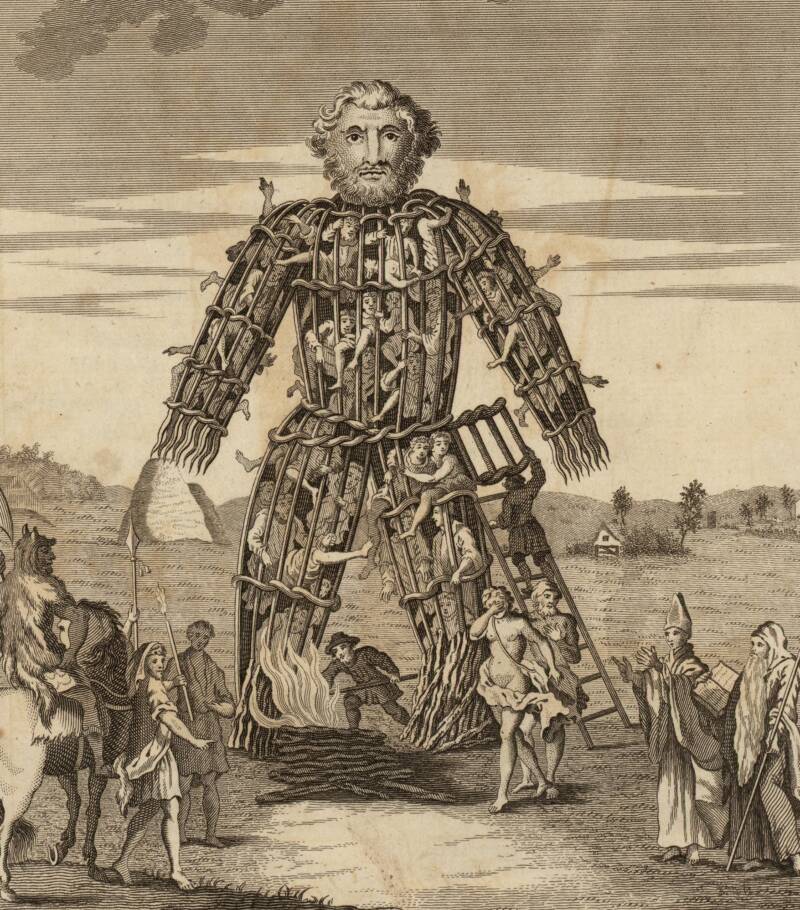
The National Library of WalesA “wicker man” similar to what was described by Julius Caesar.
Caesar was far from the only Roman to claim that the Druids practiced human sacrifice. The historian Pliny the Elder wrote that Druids believed that “to murder a man was to do the act of highest devoutness… and to eat his flesh was to secure the highest blessings of health.”
Cornelius Tacitus similarly documented human sacrifice among the Druids when he reported that Roman forces found widespread evidence of such after they’d put down an uprising on the island of Mona (Anglesey).
“Their groves, devoted to inhuman superstitions, were destroyed,” Tacitus wrote. “They deemed it indeed a duty to cover their altars with the blood of captives and to consult their deities through human entrails.”
Even modern-day discoveries have suggested that the Druids conducted human sacrifice. As National Geographic reports, a peat cutter came across a 2,000-year-old body in a bog in Cheshire, England, in 1984. The so-called “Lindow Man” had been hit on the head, stabbed, and strangled. Tellingly, his stomach contained mistletoe — revered by the Druids — which has led some to believe that he was sacrificed by them.
However, accounts of human sacrifice from the Romans should be taken with a grain of salt. They had reason to paint the Druids as bloodthirsty and primitive. The spiritual leaders held great influence over the people the Romans were trying to conquer, after all.
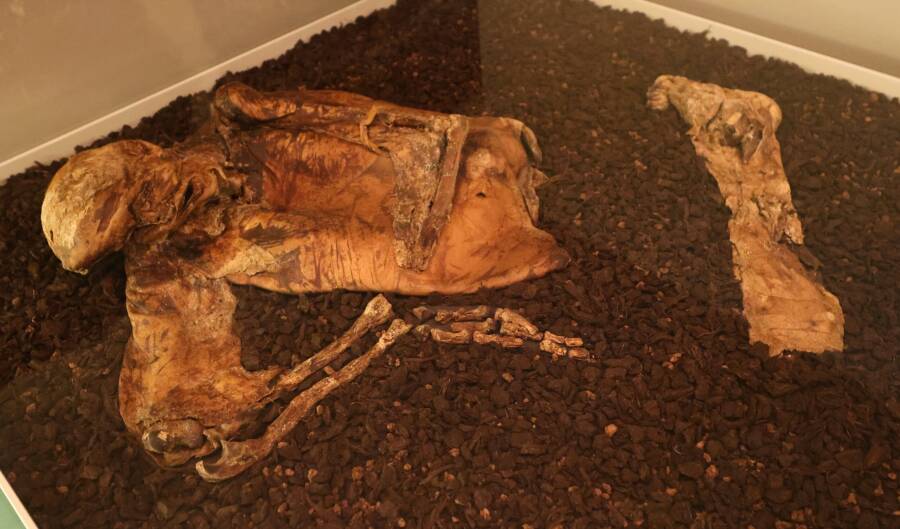
Geni/Wikimedia CommonsThe Lindow Man on display at the British Museum.
Indeed, Roman rulers soon cracked down. Their determination to stamp out the Druids, alongside the spread of Christianity in the first century C.E., brought a slow end to the practice in Gaul and the British Isles.
The Ruin And Reincarnation Of An Ancient Religion
A succession of Roman emperors worked to suppress the Druids, starting with Augustus in 27 B.C.E. He was followed by Tiberius in the first century C.E., who banned Druidism in Gaul and the British Isles.
Around the same time, Christianity began to spread across Europe. Druidism faded into the background as former Druids transitioned to new roles as Pagan priests, healers, and magicians.
But it never entirely went away.
Instead, Druidism quietly continued up until the ninth century C.E. And even after it disappeared completely, the movement was later resurrected. 18th-century Romantics revived Druidism — poet William Blake purportedly saw himself as a Druid — as did others in the 20th and 21st centuries.
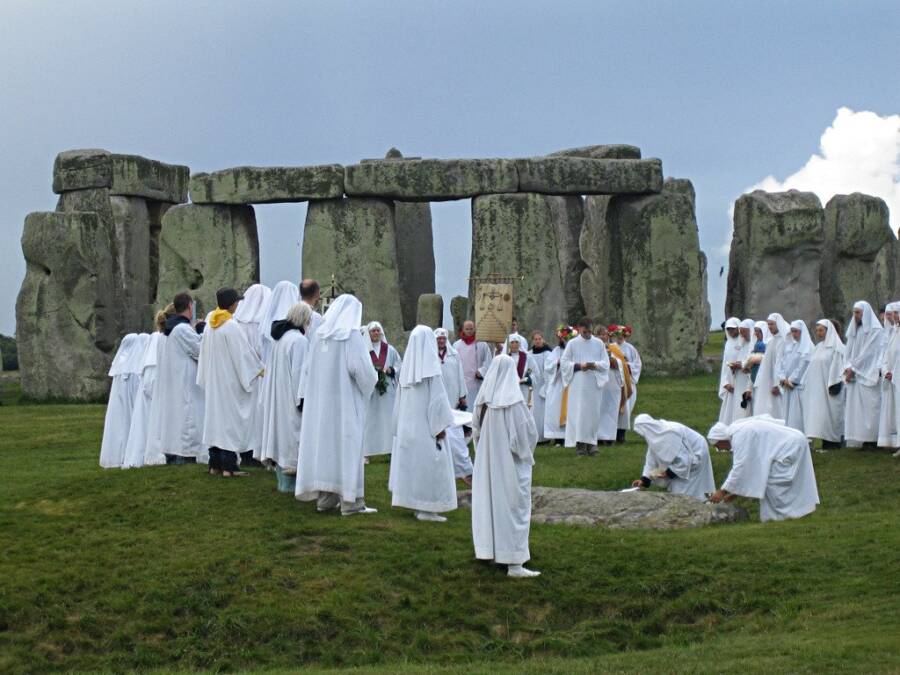
sandyraidy/Wikimedia CommonsModern-day Druids celebrating their rituals at Stonehenge in England. 2007.
Modern Druidism, druidry.org claims, “offer[s] a spiritual way that genuinely draws on an ancient heritage for inspiration, whilst making no claim to be identical to the Druidism that was practised two thousand years ago.”
Indeed, it’s difficult to truly understand the Druids of ancient times. All known texts about them were written by people who weren’t Druids, like the Romans, who naturally had their own biases about the practice.
We’ll never know for sure what happened in those secluded groves in Gaul and the British Isles, where the air may have smelled like mistletoe and blood, and people may have looked to a man in a golden robe for guidance.
After reading about the Druids, discover the fascinating stories behind nine of the world’s oldest structures. Or, learn about the Picts, the fierce Scottish warriors who fought off the Romans, and discover the story of the Druids’ supposedly magical battles with Saint Patrick.





